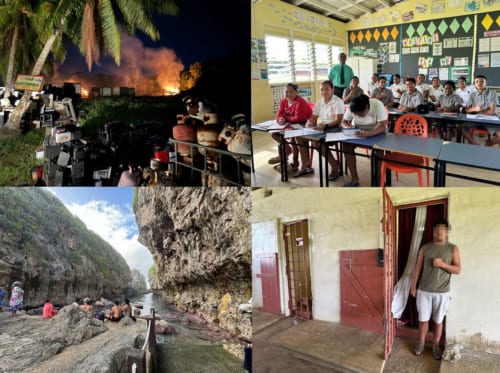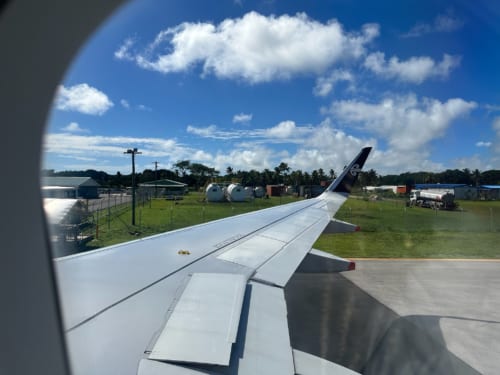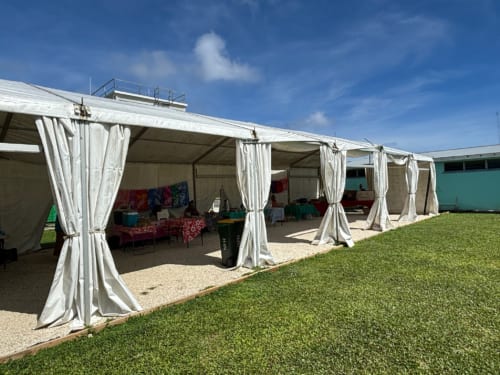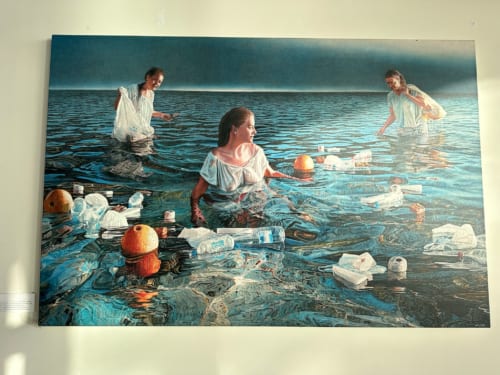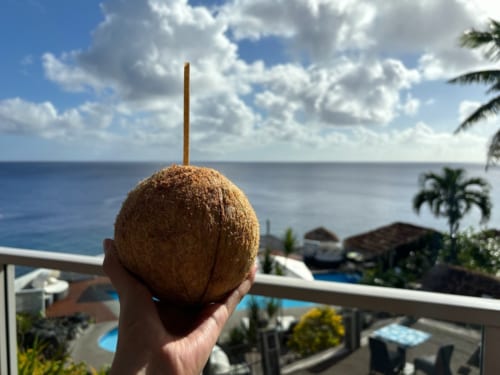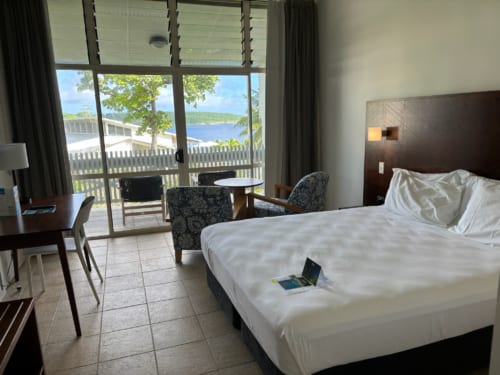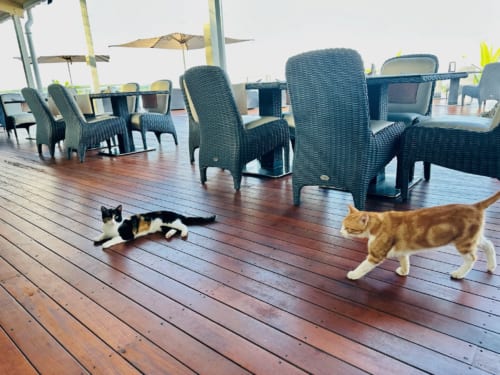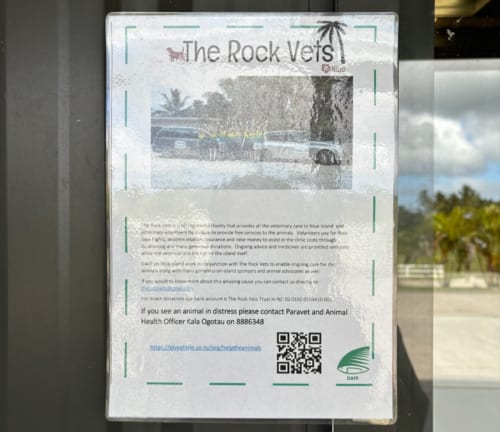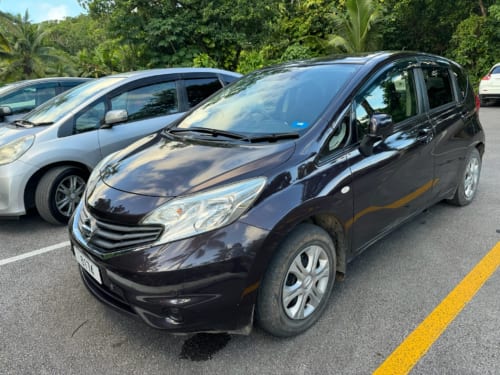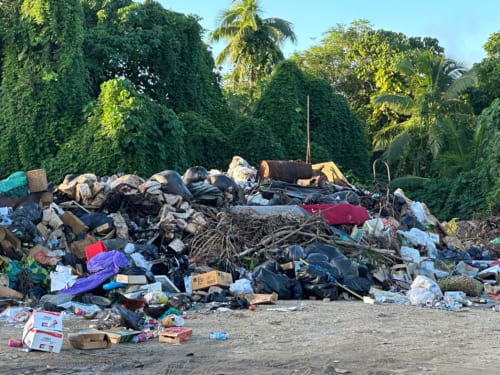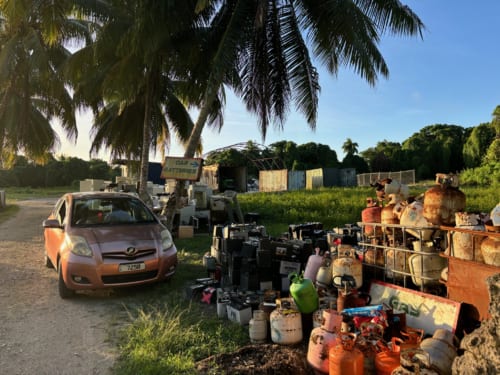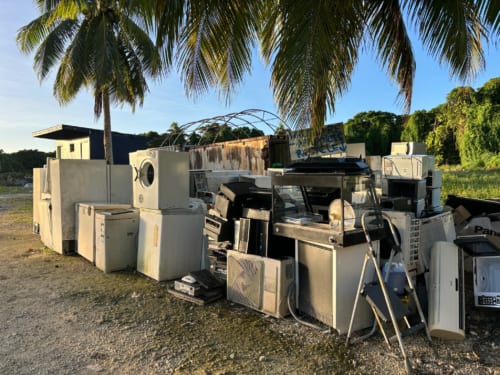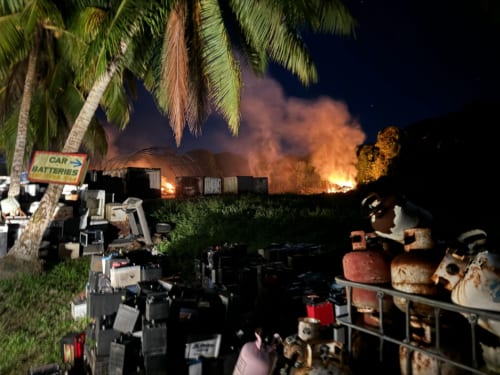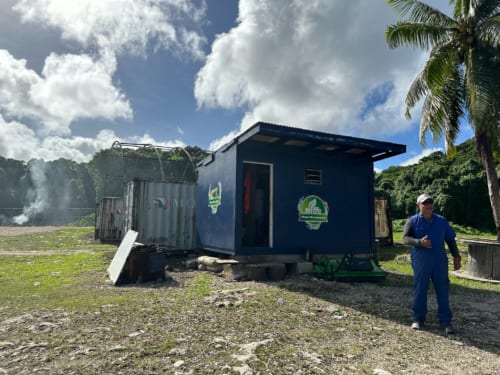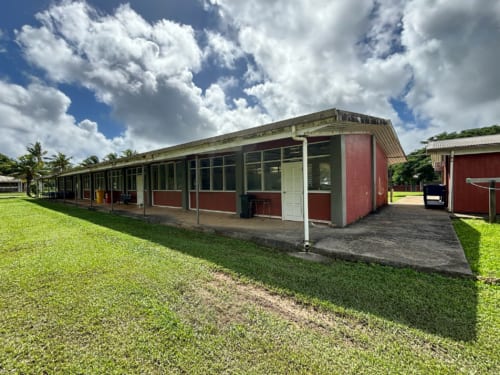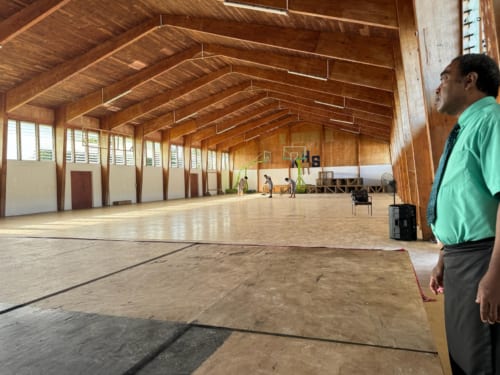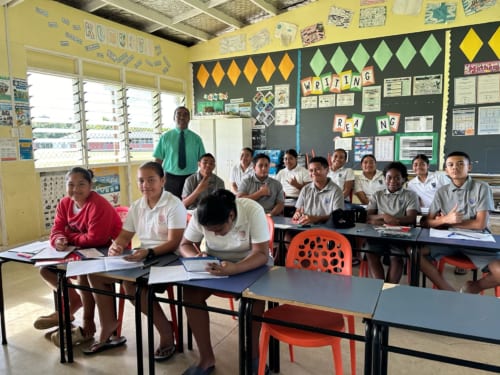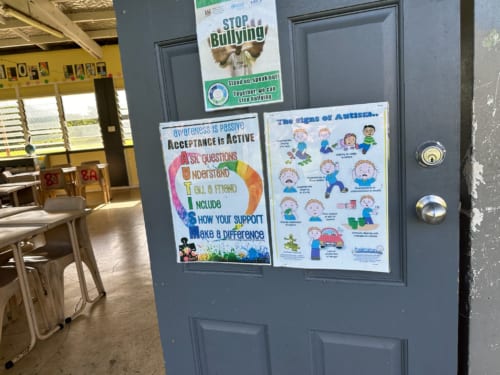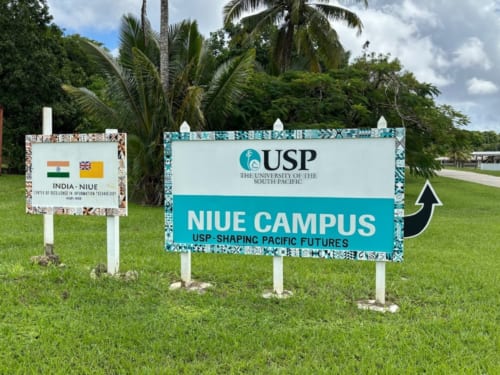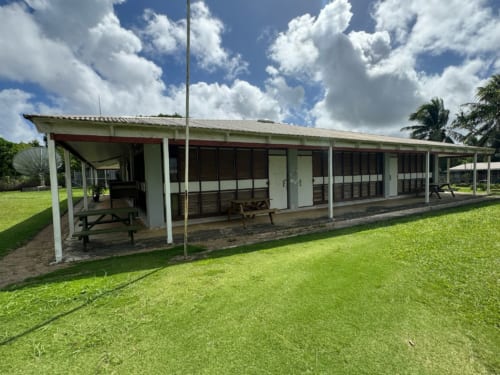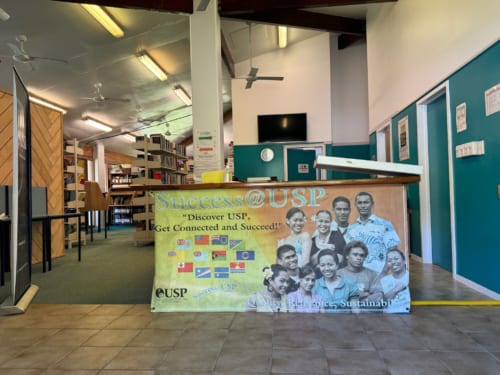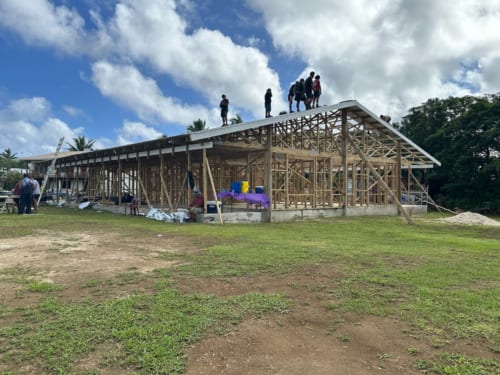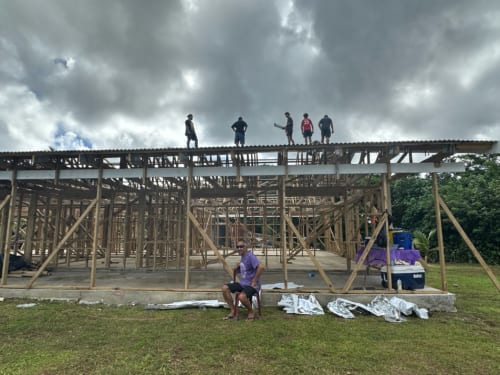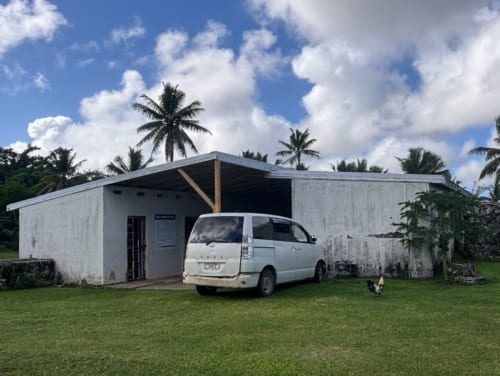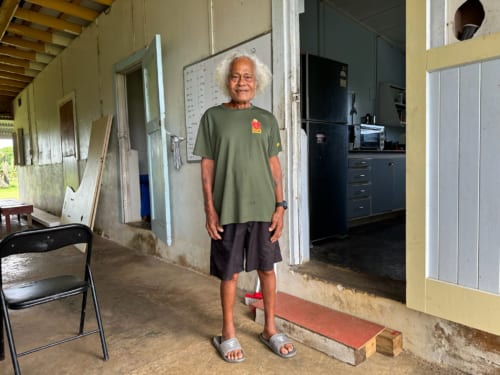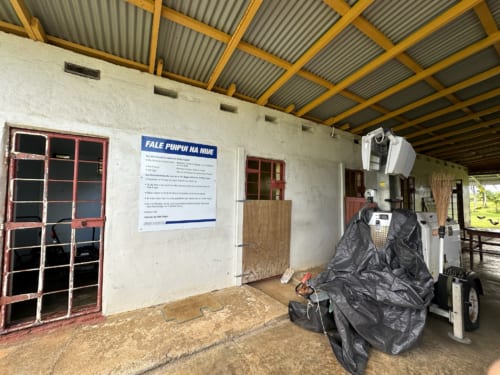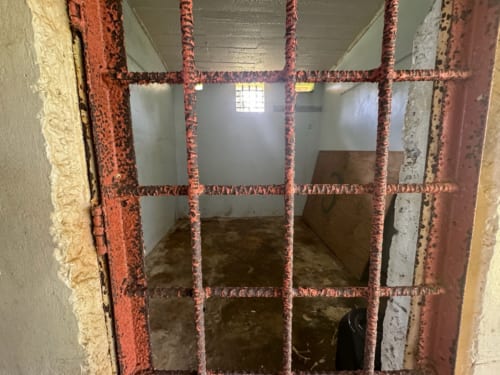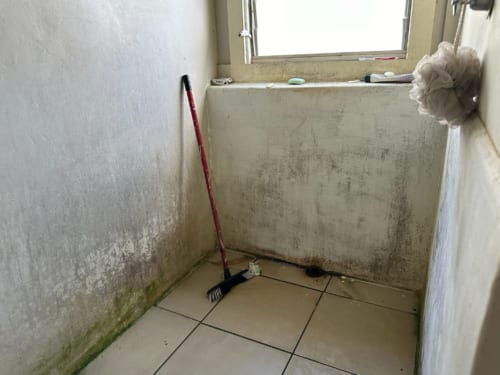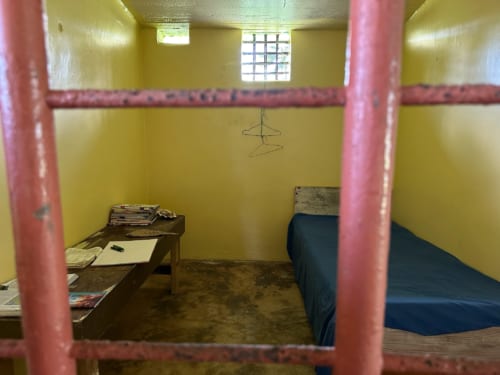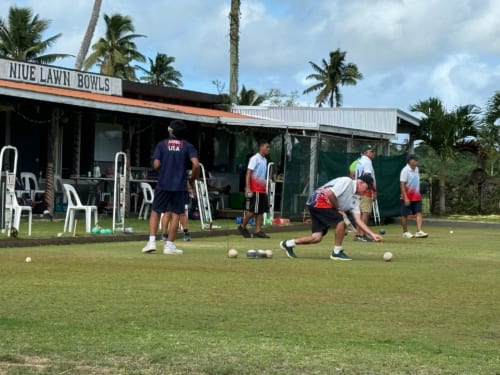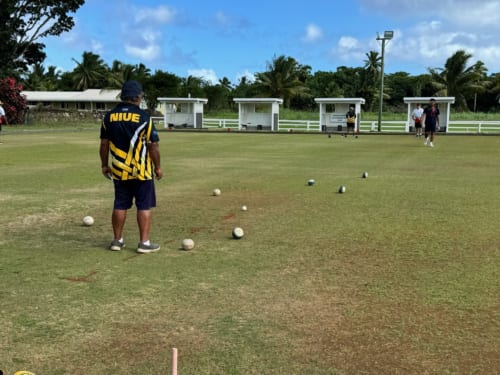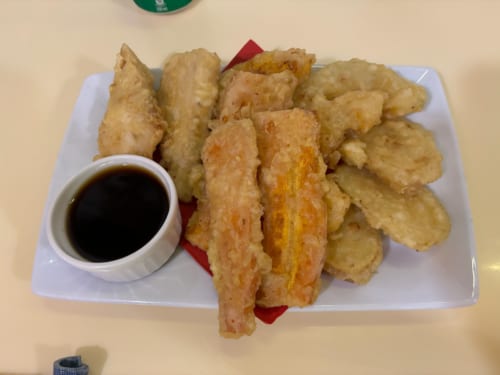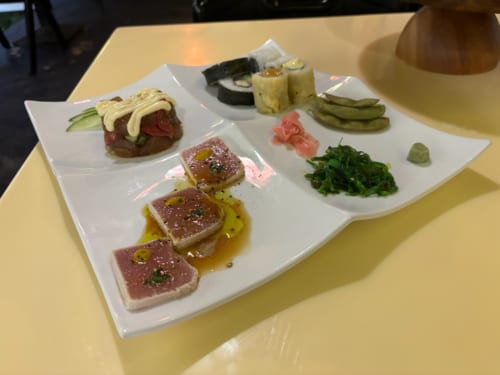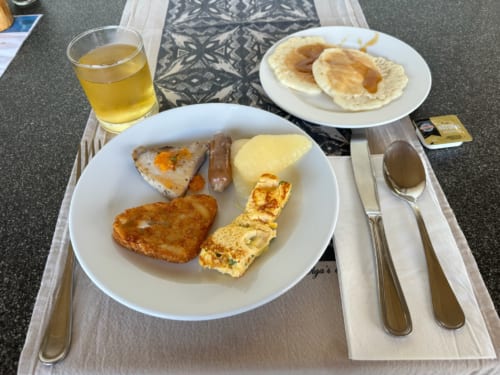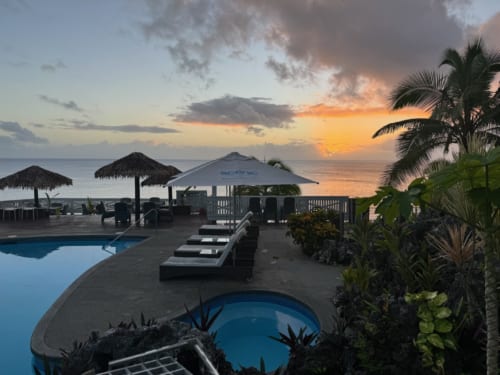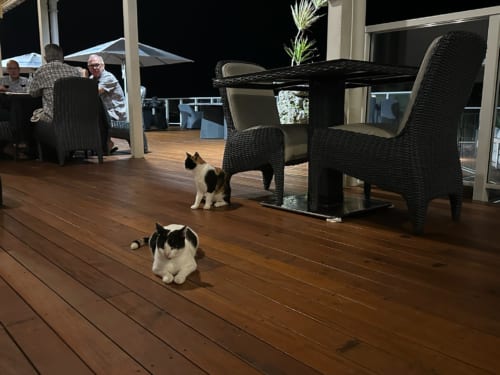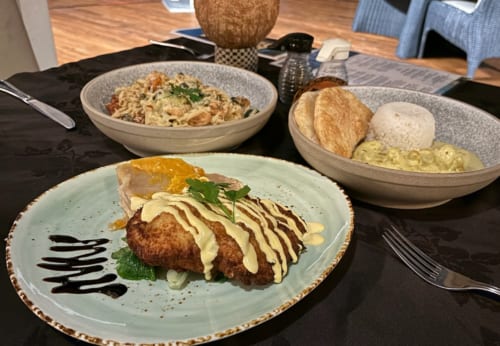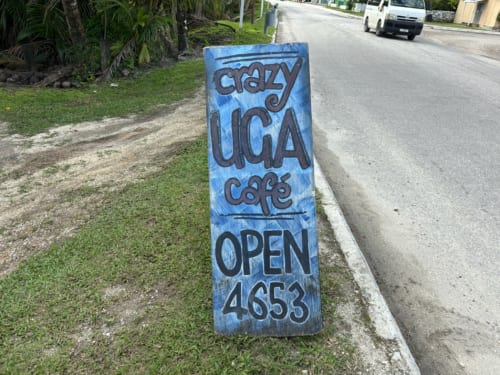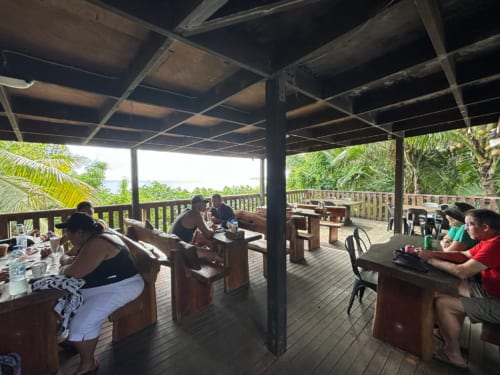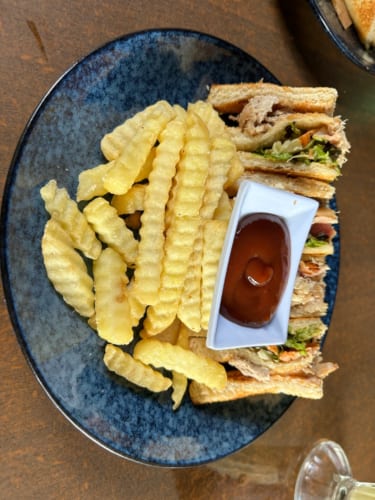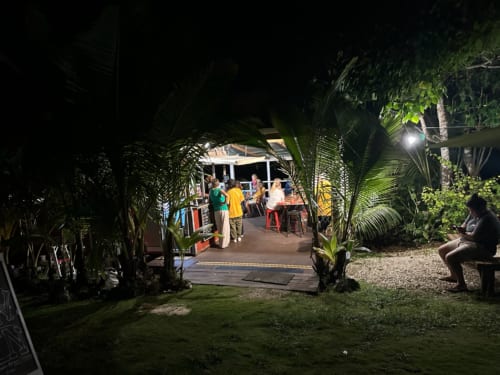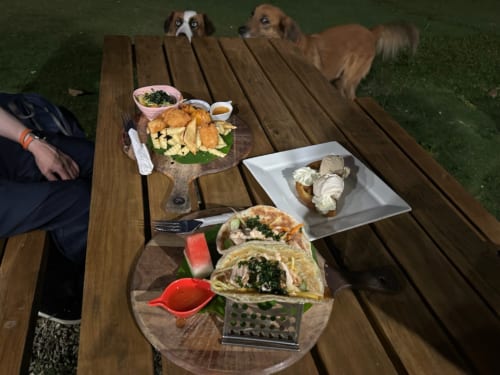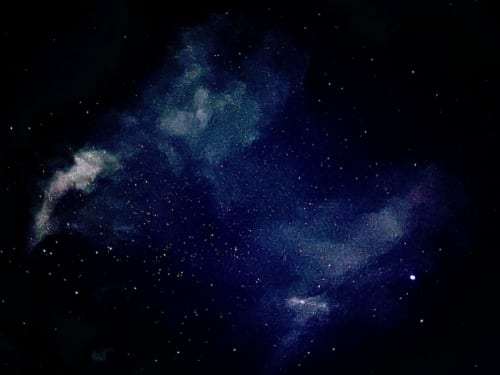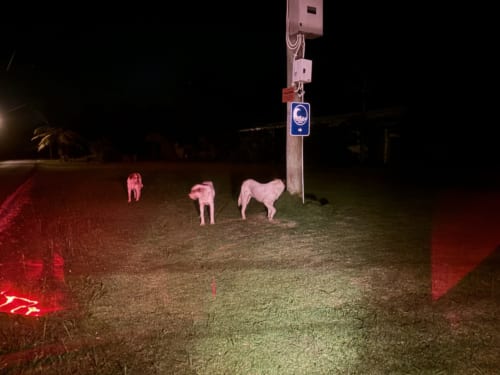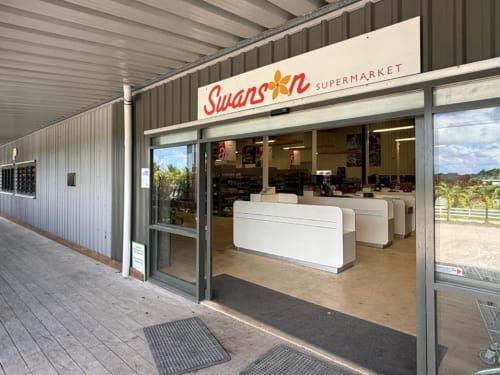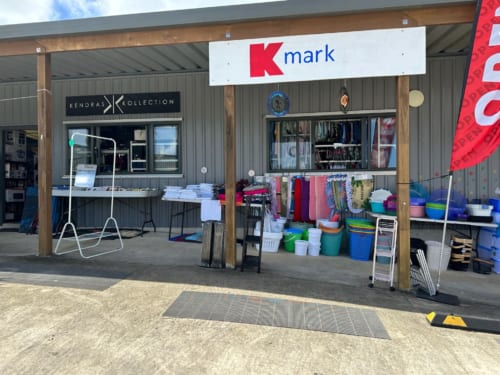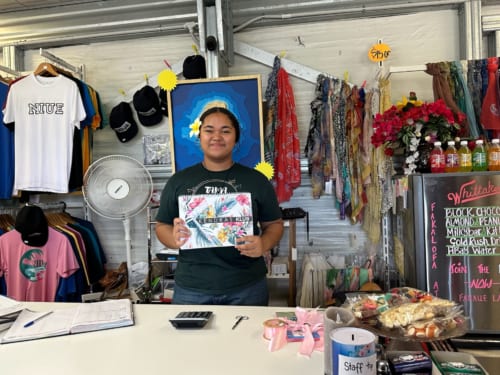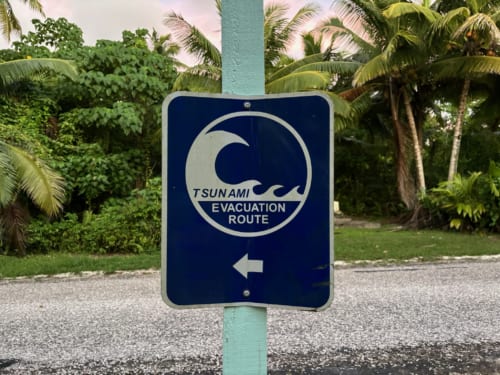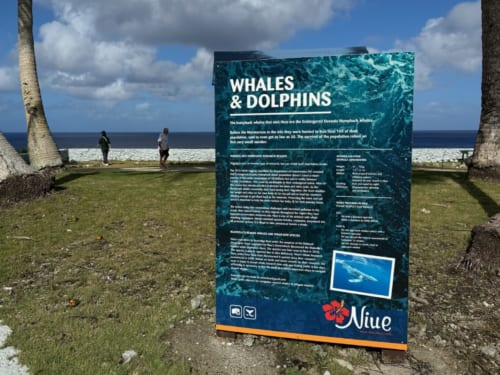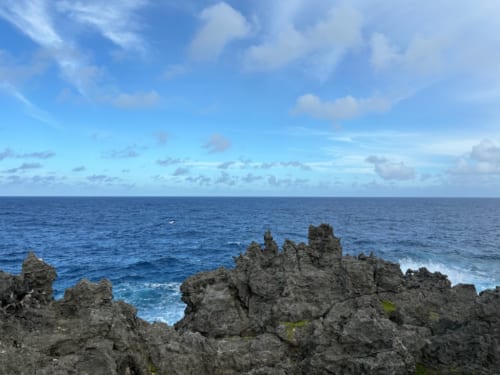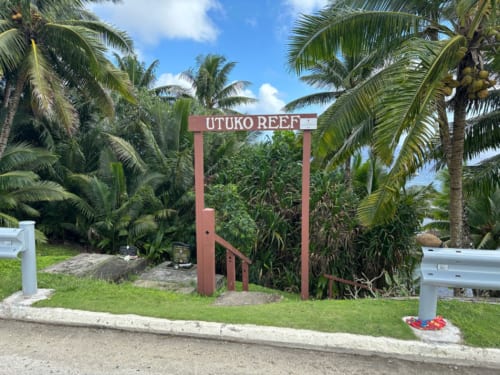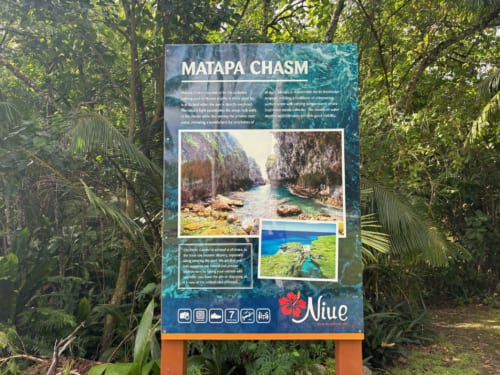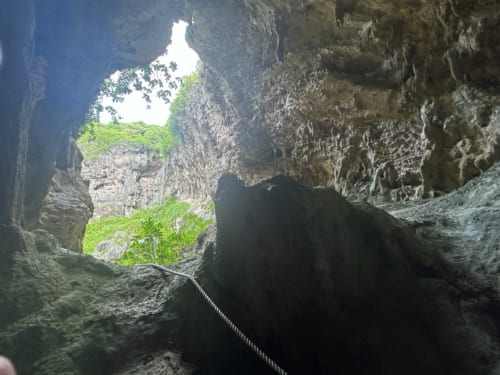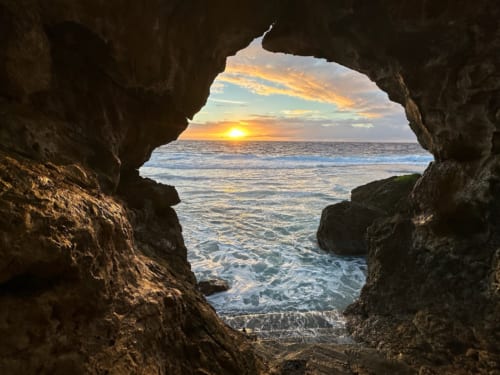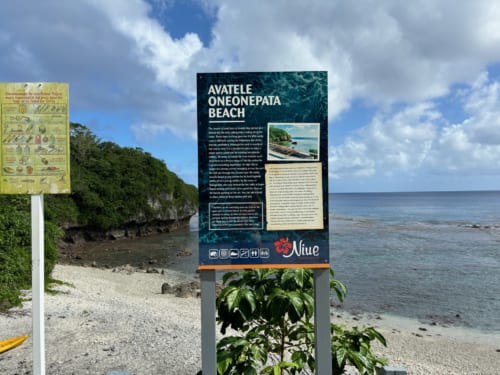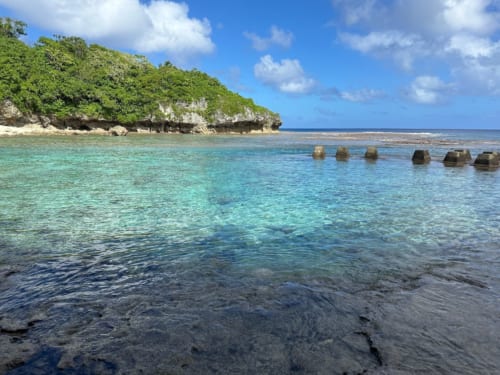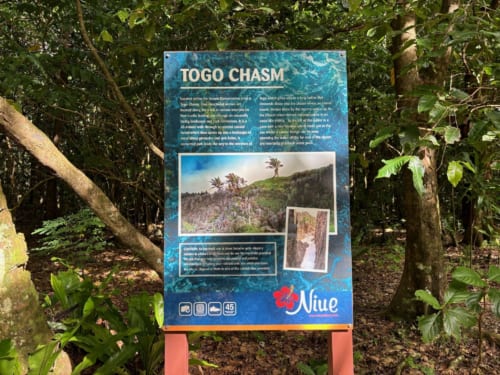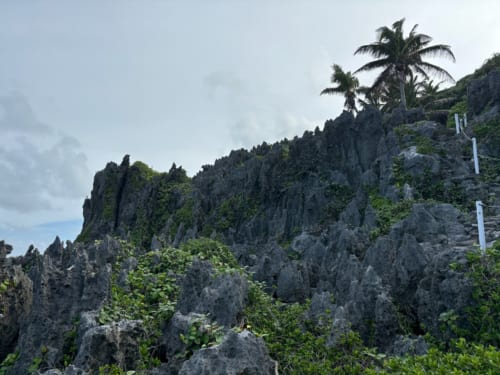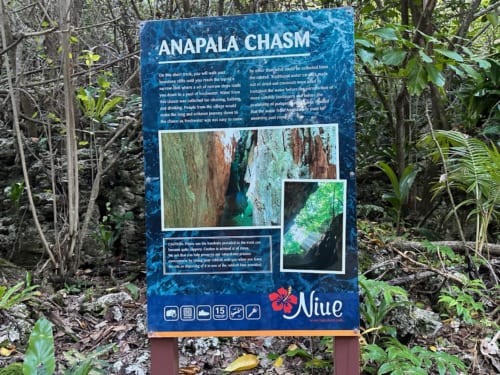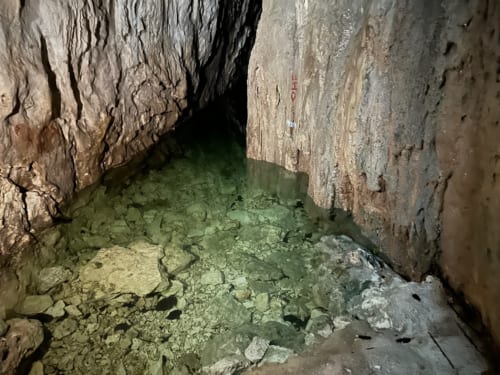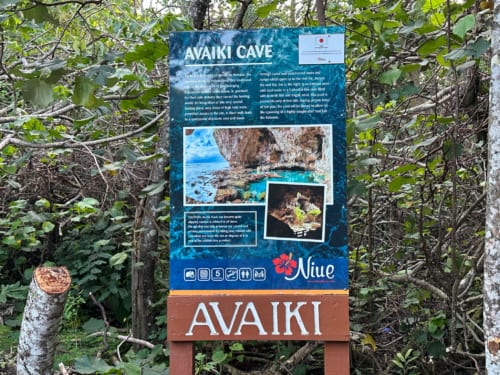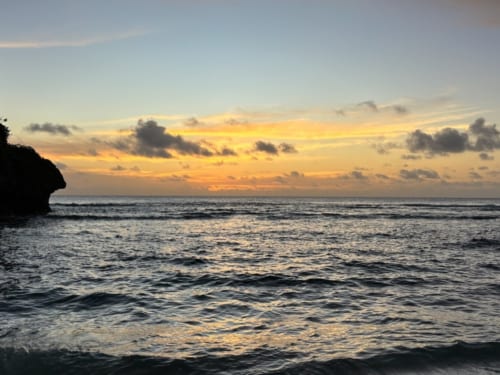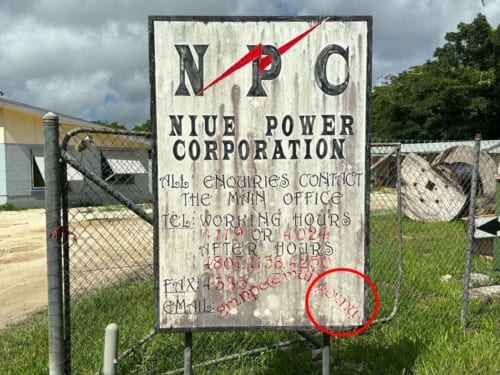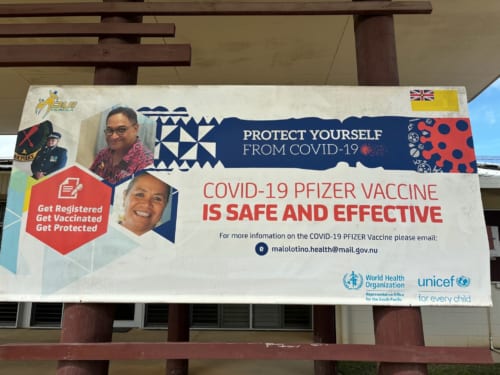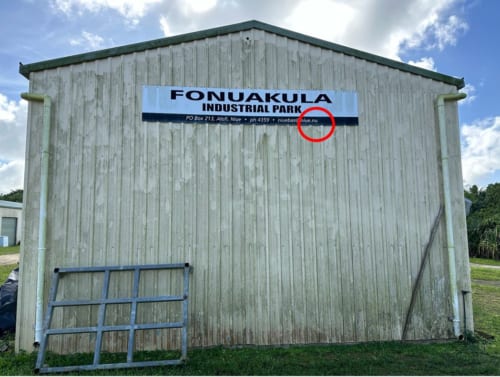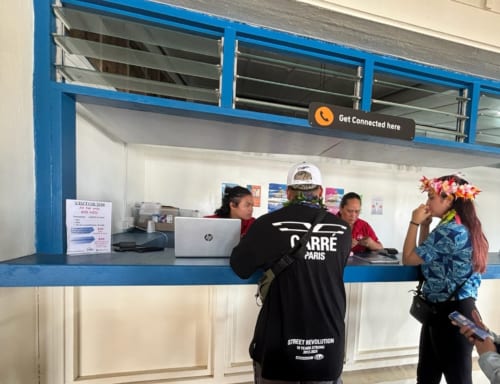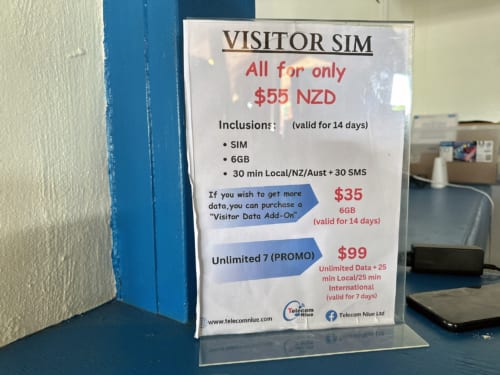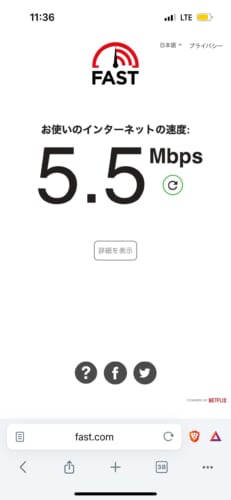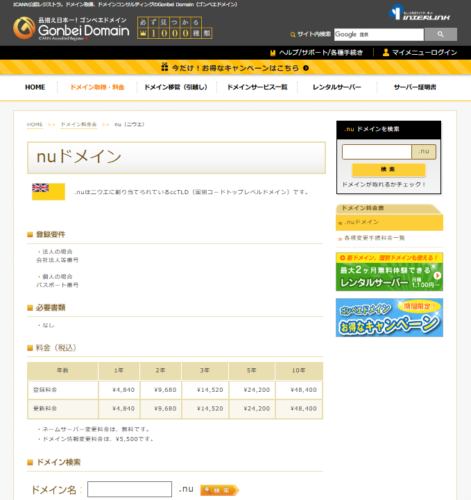Niue is one of the world’s smallest independent nations, with a population of approximately 1,800 (UN estimate for 2024). It is one of the least populated countries in the world, after the Vatican, and the local people are very relaxed and laid-back, perhaps because a quarter of them are government employees who enjoy a Four-Day Working Week. On this trip we explore various aspects of life in Niue. We chat with the island’s sole prison inmate, who is actually free to come and go as he pleases, discover a fire and raise the alarm, visit a high school, help out at a construction site and check out the best scenic spots on the island, with the help of recommendations from the locals. The ccTLD for Niue is “.nu“.
◆Where is Niue?
This island nation is located in the South Pacific Ocean, northeast of New Zealand, east of Tonga and southeast of Samoa. It is an oval-shaped island with an area of 269 square kilometers, making it the world’s largest raised coral atoll. The local currency is the New Zealand dollar (NZD).
= Table of Contents =
◆Fire! Rushing into a Hotel to Raise the Alarm
◆Class at the Only Local High School
◆Talking to the Lone Island Prisoner Who Can Come and Go as He Pleases
◆Niue Food Report – A Japanese Restaurant Run by Japanese People and a Cafe Where You’re Also on the Menu for Mosquitos
◆Watch Out for Dogs While Stargazing and Other Niue Information
◆Must-Visit Places in Niue as Recommended by the Locals
◆Finding “.nu” Around Town
◆How to Purchase a SIM & Test the Internet Speed
◆Fire! Rushing into a Hotel to Raise the Alarm
We arrive at Niue International Airport after a three-hour flight from New Zealand.
There is a shop next to the airport where you can buy accessories and souvenirs, but there is nowhere else once you have gone through immigration, so keep that in mind.
We get on the hotel shuttle bus, and it takes us about 7 minutes to get to the hotel from the airport. We arrive at our accommodation for our stay here, the Scenic Matavai Resort Niue.
In the lobby of the hotel, a large painting catches our attention with its powerful message that seems to say “don’t pollute our beautiful ocean”.
We enjoyed an ocean view from our room. Our welcome drink was coconut water from a fresh coconut. It was chilled, there was plenty of coconut water inside and it was delicious!
The rooms are fully air-conditioned. The bed is soft and fluffy. If we’re lucky, we may even see whales and dolphins from our balcony!
We came across some friendly cats that had all the guests smitten.
Incidentally, we learned there is no veterinary clinic on the island. But, if anything happens to your pet, there is a New Zealand charity you can get in contact with and they will lend support. It is all funded through donations.
There is no public transportation in Niue, such as buses or taxis, so we asked the hotel to organize a rental car for us. We got a Nissan model car for 3 days, for $387 NZD. Every now and then, the car liked to announce that there was no SD card inserted.
After driving for around ten minutes, we came across a large mound of rubbish, dumped in a field.
It seems to be the local dumping ground. Cans and bottles had been separated, and if anyone needed some, they are welcome to take them home.
We even saw some large appliances.
Later on that same day, after sunset, we passed this same spot again, and we were surprised to see flames rising from the rubbish dump! There was nobody else around. When we rushed into our hotel and told the receptionist that there was a fire, we were told they were just doing some scheduled burning and it was nothing to worry about.
We are surprised that burning rubbish at night doesn’t cause wildfires. Still feeling concerned, we dropped in to the dump again the next day and we were able to chat with the government employee who was in charge of burning the rubbish last night. Apparently, for four days each week (the four-day work week for Niue’s government workers) they have the routine of burning rubbish here, so we don’t need to worry. We were relieved to hear that.
◆Class at the Only Local High School
Niue has a literacy rate of 98%, one of the highest among Pacific Island countries. There is free compulsory education on the island from 3 to 16 years of age. After elementary school, there is a seven-year high school system. So, we decided to drop by Niue High School, the island’s only high school. It’s a row of single-story school buildings.
They kindly gave us a tour, despite our sudden and unexpected visit. They have an impressive gymnasium. The school has around 200 students and 40 teachers.
We were also invited to observe a class in session! These smiling students were in the middle of an English class. Their teacher is Jimmy, from Fiji. Teachers wear ties and black formal wrap-around sarongs known as lavalava.
Classroom doors were covered in information posters, covering such topics as how to “Stop Bullying” and “The signs of Autism”.
There is also a university within the same grounds. It’s highly surprising that an island nation with only 1,800 people has a university!
This is the university building. It’s single-story, just like the high school.
We visited reception, but no one was around. It seems that most of their classes are held remotely.
As we were about to move on to our next destination, we pass a construction site playing music with a springy beat.
While we had a bit of a look around, a cheerful carpenter asked us if we could help carry some tin sheets for them, so we helped out a little bit.
The owner of the house being built is on the roof. It seems he is also part of the building team. It’s going to be quite a big house and the owner told us privately that it would cost around $200,000 NZD. We’d love to see it when it’s finished.
◆Talking to the Lone Island Prisoner Who Can Come and Go as He Pleases
There is only one prison in Niue. We decided to go and check it out, as according to prior information we thought there were no inmates housed at the time. The prison’s location can’t be seen on Google Maps. This single-story building is the prison.
When we got closer, a guard came out to meet us. When we said we were from Japan, he offered to show us around. The guard came from Tonga to Niue and lives in a prison guard room.
The prison has a total of eight rooms. There is no bathroom. We were told they do their business in the bushes nearby.
Inside one of the rooms. It’s hard to imagine anyone living here, probably because it’s empty.
There’s no toilet, but there is a shower.
While on our tour of the prison, a well-built young man pops his head out from one of the back rooms and gives us a wave. To our surprise, he is currently the lone inmate in Niue. He comes out of his room and asks us “Where are you from? Japan? I have a friend in Japan called Yuki.” and tells us, “I like anime”. It almost appeared as if he was living in a boarding house, and not serving time.
Apparently, he is serving time for impregnating his 15-year-old girlfriend at 19 years of age. He showed us inside his room. There was a bed and a desk with magazines, a notebook and pens.
After leaving the prison, we came across the Niue Lawn Bowls Club, just a few minutes walk away. Lawn bowls is a sport where a resin ball is rolled as close as possible to a smaller target ball, called a jack, and can be played and enjoyed by all people, no matter their age, fitness ability, gender or disability. As estimated 2 million people compete worldwide.
The Niue Lawn Bowls team even had the opportunity to compete at the World Championships in Gold Coast, Australia, in August 2023.
◆Niue Food Report – A Japanese Restaurant Run by Japanese People and a Cafe Where You’re Also on the Menu for Mosquitos
Not to be missed is the Japanese restaurant, Kaiika. The restaurant is run by Taiichi Wada, apparently the only Japanese person on the island. Unfortunately, he wasn’t there when we visited.
The menu included both Japanese and Western cuisine and first we went with the NIUEAN Fish of the day, Papaya and Chillies pizza ($24 NZD). It was delicious and a little spicy. They have a bottle of soy sauce on the table too, in case you’d like some.
Vegetable Tempura ($24 NZD). It’s all very authentic, no doubt thanks to the restaurant’s Japanese owner.
The “Sampler of the Day” set ($32 NZD). This set allows you to try a variety of dishes, such as fried sushi and carpaccio.
We ate breakfast and dinner at Scenic Matavai Resort Niue, where we were staying. Breakfast is served buffet-style.
We ate dinner while enjoying the sunset.
Of course, the cats are never very far away.
Dinner on this particular evening included a live guitar performance. When he noticed us, he sang the song Twinkle, Twinkle, Little Star in Japanese. He had a low, beautiful voice and he sang the Japanese lyrics perfectly.
While listening to his wonderful performance we enjoyed Polynesian Coconut Curry ($32 NZD), Garlic Prawn Spaghetti ($37 NZD), Sticky Niuean Honey Pork Belly ($42 NZD). The prices were on the high side, but the portions were generous and the seasoning was mild.
We also visited a few cafes on the island. First, let’s take a look at Crazy Uga Café, which is located in the Alofi area. Keep in mind that all of these cafes have outdoor seating, so it can be hot and humid during the day, and there are mosquitos at night.
This cafe is especially popular with the locals. It’s pretty hot and stuffy.
The hot chips that came with the Crazy Club Sandwich ($18 NZD) were so good!
We next visited the HIO CAFÉ. We went in the evening and it was crowded. Since we hadn’t made a reservation in advance, we ended up eating outside in the dark.
We ordered Fish Tacos ($24 NZD), Waffles ($14 NZD) and Deep-fried Seafood ($25 NZD). The seasoning was quite rich, but there was no time to linger over our food as we were being eaten alive by mosquitos. Several free-roaming dogs came up to us while we were eating as well. They didn’t seem to want any of our food, they just stared at us and looked really cute!
◆Watch Out for Dogs While Stargazing and Other Niue Information
Niue has a wide, clear sky, thanks to its low population and lack of tall buildings. At night, a star-filled sky can be seen with the naked eye.
But, while you are watching the incredible starry sky, also keep an eye out for dogs. As soon as we stopped the car and got out, suddenly several dogs ran out of the darkness toward us, barking. We hurried back inside the car. While it may feel safer stargazing near hotels or restaurants, do keep an eye out for dogs.
The Tāoga Niue Museum is located on the site of the former Huanaki Cultural Centre & Museum, which was destroyed by Cyclone Heta in 2004. This museum was built in 2018. After removing our shoes, we enter a room where we watch a video that explains the history of Niue. The room was comfortable and we had the rare treat of air conditioning, too. Admission costs $10 NZD.
The island’s biggest supermarket, Swan Sons Supermarket, is located right next to the prison. It’s not always easy to come across bottled water on the island, so we recommend picking some up here.
The landmark “K Mark” sign, for the store Kendra’s Kollection, which is also located in the Swanson Commercial Complex. They sell toys, games, clothing and all kinds of household goods.
T-shirts with “Niue” printed on them might make a good souvenir. This staff member was bright and friendly. Credit cards are an accepted form of payment.
Like in the Cook Islands, we saw signs for tsunami evacuation routes throughout the island.
◆Must-Visit Places in Niue as Recommended by the Locals
Niue is the world’s largest raised coral atoll and has all kinds of caves and chasms not found on any other island. On this Domain Island Tour, we explore ten of these spectacular locations.
1.WHALES & DOLPHINS(WHALES & DOLPHINS)
If you’re lucky, you can see whales and dolphins at this beach. Unfortunately, we didn’t get to see any. Apparently, the best time to see them is from July to October.
This view gives you a better chance of spotting a whale or dolphin.
2.UTUKO REEF(UTUKO REEF)
Walk down the steps from the road, and you’ll be right there.
The water is so crystal clear that you can easily see the coral reef on the seabed.
3.MATAPA CHASM(MATAPA CHASM)
A spectacular spot the locals recommended we visit. Remember to wear sneakers, as the path is a bit rough in places.
Follow this “jungle” path and you’ll arrive at the chasm. It’s a popular snorkeling spot.
4.TALAVA ARCHES(TALAVA ARCHES)
This beautiful location is best for experienced hikers, as you must take a treacherous path covered in sharp rocks.
Just ten minutes into the hike, one of our Domain Island Tour members went for a tumble, injured themselves and had to turn back. At the 30-minute mark, there’s a section where you need to use a rope to get down an almost vertical slope. The rest of the team gave up at this point. Too dangerous. If you’re brave enough to continue on, you’ll be rewarded with spectacular views, just make sure you have the right equipment for the hike. Be aware that you’ll also lose cell signal the further you go on this hike.
5.Tautu Sea Track(Tautu Sea Track)
We drove here at 6am, after hearing that it’s a beautiful spot to watch the sunrise. The road to get here was narrow and overgrown with plants and weeds, and it kept setting off the car’s warning system. But once through that area, you end up at a location with an absolutely spectacular view. And we had it all to ourselves.
6. AVATELE BEACH(AVATELE BEACH)
Known for its picturesque beaches.
The water was shallow and crystal clear.
7.TOGO CHASM(TOGO CHASM)
A stunning and easy-to-get-to location.
It’s a great spot to feel the scale of Niue’s breathtaking natural environment.
We reached a point where you need to go down a ladder. If we went down the ladder we could go further along, but we decided to call it a day, as we felt it was a bit dangerous.
8. ANAPALA CHASM(ANAPALA CHASM)
Near Hakupu village. There are steps, so it’s a relatively easy area to explore.
At the bottom of the cliff, we saw a cold-water spring. It has long been an important source of water for Niue, which has no rivers or lakes. It’s pitch black down here, so I used the flash on my cellphone to take this photo.
9. AVAIKI CAVE(AVAIKI CAVE)
Once a royal bathing pool, Avaiki Cave is considered one of the best spots to visit in Niue. The sign mentioned that Japan provided maintenance and other support.
Out of all the places we visited, Avaiki Cave has the best maintained and easy to walk pathways. The bright sunlight looked magical at the point just before you reach the beach.
10. HIO BEACH(HIO BEACH)
After being told that it’s a beautiful spot to watch the sunset, we went to check it out. It’s close to HIO CAFÉ, where we had an encounter with bothersome mosquitoes.
It was a little cloudy, but we still enjoyed a peaceful and beautiful sunset.
◆Finding “.nu” Around Town
The ccTLD for Niue is “.nu“. Interestingly, the domain “.nu” is becoming popular in Northern Europe. This is because the word “nu” in Swedish, Danish and Norwegian means “now”. Niue Power Corporation uses the “.gov.nu” domain for their e-mail address.
This hospital’s contact address also uses “.gov.nu”.
Also seen here in the contact address for an industrial park.
◆How to Purchase a SIM & Test the Internet Speed
We bought a SIM at Telecom Niue in Niue International Airport. The staff there helped us set it up. It took around 15 minutes per phone.
We had no choice but to go with the 14-day plan for $55 NZD.
While we did lose signal sometimes in the more remote parts of the island, in the central areas we measured 5.5Mbps.

